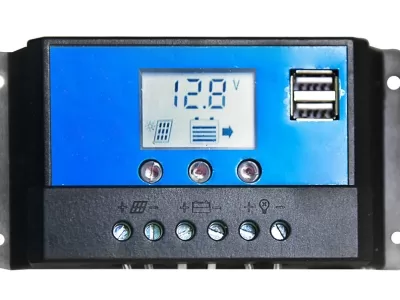Solar panel output refers to the amount of energy produced by a solar panel under specific conditions. This output is usually measured in watts (W) or kilowatts (kW) and determines the efficiency and performance of a solar panel. Several factors can affect the output of a solar panel, and understanding these factors can help you make the most of your solar energy system.

Factors Affecting Solar Panel Output
There are several factors that can influence the output of your solar panels. These factors include:
Type of Solar Panel
There are three main types of solar panels: monocrystalline, polycrystalline, and thin-film. Monocrystalline panels have the highest efficiency, followed by polycrystalline and thin-film panels. The type of solar panel you choose will directly impact its output.
Size of Solar Panel
The size of a solar panel will also affect its output. Larger panels can produce more energy than smaller panels, but this also depends on other factors like efficiency and the available space for installation.
Efficiency
The efficiency of a solar panel refers to the percentage of sunlight it can convert into usable electricity. Higher efficiency panels will have higher output rates compared to less efficient panels.
Temperature
Solar panels are sensitive to temperature changes. As the temperature increases, the efficiency of the solar panels decreases, reducing their output. This is known as the temperature coefficient.
Angle of Incidence
The angle at which sunlight strikes the solar panel can also affect its output. Solar panels work best when sunlight is directly perpendicular to the panel’s surface.
Shade
Shade can have a significant impact on the output of a solar panel. Partial or full shading of a panel can drastically reduce its energy production.
How to Maximize Solar Panel Output
To get the most out of your solar panels, you can take several steps to maximize their output.
Proper Installation
Ensuring that your solar panels are properly installed can greatly impact their performance. This includes:
– Orientation
Solar panels should be oriented to maximize their exposure to sunlight. In the Northern Hemisphere, panels should face south, while in the Southern Hemisphere, they should face north.
– Tilt Angle
The tilt angle of the solar panels should be adjusted based on your latitude to maximize the sunlight they receive throughout the year.
Regular Maintenance
Keeping your solar panels clean and free of debris will help maintain their efficiency and output. Dust, dirt, and bird droppings can reduce the amount of sunlight that reaches the solar cells, so regular cleaning is essential.
Upgrade Your Solar Panels
As solar panel technology advances, newer panels become more efficient and capable of producing more energy. If you have older panels, consider upgrading to more efficient models to boost your solar panel output.
Measuring Solar Panel Output
To accurately measure the output of your solar panels, you can use a solar monitoring system. These systems can provide real-time data on your solar panel performance, allowing you to monitor energy production, identify potential issues, and make informed decisions to improve output.
Impact of Solar Panel Output on Energy Use
The output of your solar panels directly affects how much energy your solar system can provide for your home or business. A higher output means that more of your energy needs can be met by solar power, reducing your reliance on the grid and lowering your energy bills.
Conclusion
Solar panel output is an essential aspect of any solar energy system. By understanding the factors that affect output and taking steps to maximize it, you can ensure that your solar panels are working efficiently and providing the maximum amount of energy possible. Keep in mind that proper installation, regular maintenance, and upgrading your panels when necessary are crucial in achieving the highest output from your solar panels.
FAQs
How can I calculate my solar panel output?
You can calculate the output of your solar panels by multiplying their efficiency by the amount of sunlight they receive. A solar monitoring system can help you gather this data more accurately.
What is the average output of a residential solar panel system?
The average output of a residential solar panel system depends on factors such as panel size, efficiency, location, and weather conditions. However, a typical system can produce anywhere from 3 kW to 8 kW of power.
Do solar panels produce output on cloudy days?
Yes, solar panels can still produce output on cloudy days, although at a reduced rate. The output may be around 10-25% of their maximum capacity, depending on cloud cover and panel efficiency.
How long do solar panels last, and does their output decrease over time?
Solar panels typically have a lifespan of 25-30 years. Their output does decrease over time, with an average annual degradation rate of about 0.5-1%. This means that by the end of their lifespan, they will produce about 80-85% of their original output.
Can I increase my solar panel output by adding more panels to my system?
Yes, adding more panels to your system can increase the overall output. However, it’s essential to ensure that your system’s other components, such as the inverter, can handle the increased output.